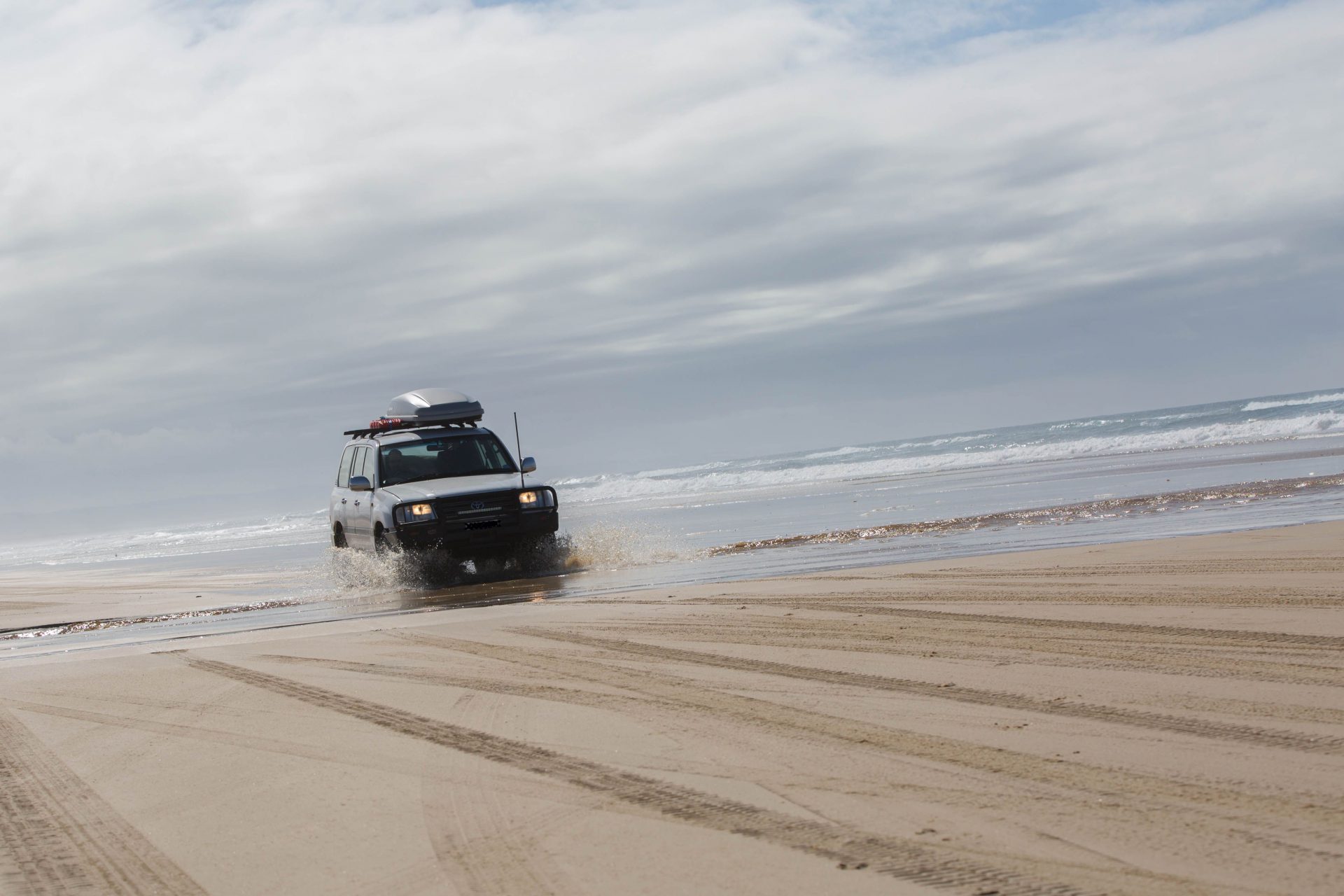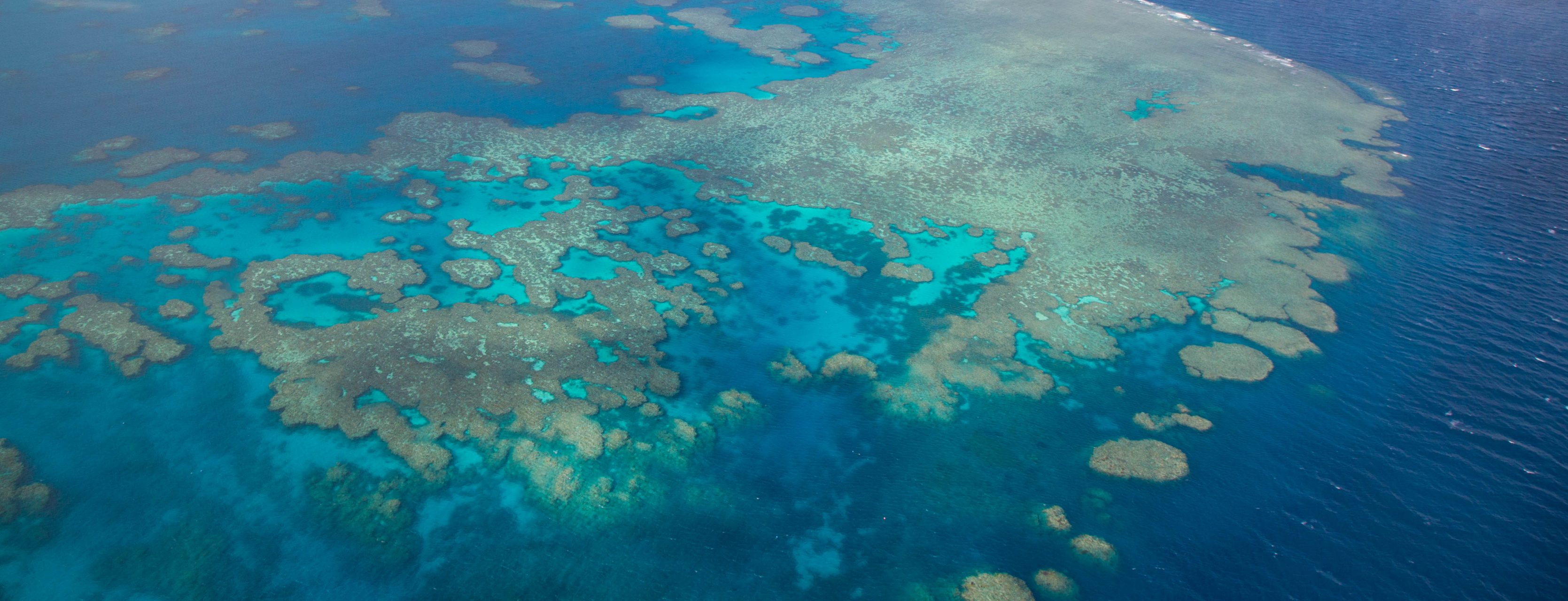We have set up camp at Nambucca Heads in the northern part of the state of New South Wales. Not far is the World Heritage site of the Gondwana Rainforests of Australia. The main information centre is located in Dorrigo National Park. From the coast the road winds itself higher and higher up into the mountainous “Hinterland”. At Dorrigo we enjoy the Skywalk above the tree tops and take the 6.5km long “Wanga-walk”, which takes us through pristine rainforest and past fabulous waterfalls.
Can´t go further east
The legacy of the “Croc Hunter”
I remember watching his “Crocfiles” on TV, when I was a bit younger. Do you remember him? He was the “crazy” guy, who always jumped into the picture, waving wildly with his stretched out hands while handling and explaining all sorts of deadly creatures. And crazy in this case is just another word for totally passionate. From what started as a small reptile park, the wildlife enthusiast Steve Irwin, who was killed in September 2006 by a stingray in the Great Barrier Reef, built Australia Zoo. That´s where his wife Terri and their two kids Bindi and Rob continue his legacy.
Setting over to Fraser
We didn´t sleep well tonight. Despite all preparation we feel the excitement of the upcoming adventure of going over to Fraser Island with our car. Fraser Island is the largest sand island in the world. There are no roads, just beaches and some inland tracks, which mostly consist of soft sand. So getting stuck will not be difficult. And enough people had their cars washed away by the ocean – there are some haunting pictures around. So we are already quite awake when the alarm goes off at 4AM. We pack up and head to Inskip point, from where the barge leaves. The other vehicle on the barge is a towing truck – very reassuring.
Turning our Landcruiser into a Sandcruiser
Fraser Island. One reason for us having taken the first barge at 6AM was to have enough driving time on both sides of low-tide. Being familiar with the tidal times (amongst other things) is crucial, as some beach passages may otherwise be impassable. From Hook Point we drive up the Eastern Beach for approx. 2 hours, get to witness an amazing sunrise, cross several creeks, stop alongside the renowned shipwreck Maheno and safely make it to our campsite (Cathedrals on Fraser).
Maheno shipwreck
The Maheno had already been put out of service as an ocean liner and had been sold for scrapping purposes to a Japanese company. When the ship was towed from Sydney to Japan, the towing ship lost its haul during a winter-cyclone in July 1935. The Maheno then stranded along the Eastern Beach of Fraser Island. After that, no one wanted the ship anymore. So its remainders can still be witnessed today.
Fraser magic
In the last couple of days we were able to do several day trips to see red canyons, yellow pinnacles, colourful sand dunes, endless beaches, an old shipwreck, champagne pools, freshwater lakes, rainforests, large kauri trees, banksia woodlands, eucalyptus forests, Dingo footprints, different bird species, remote inland tracks, creeks, spiders and much more. You are welcome to take a look at the photography section. Not having had internet nor telephone reception the whole time strangely did not bother us at all.
Back to the mainland
Time to say good-bye to Fraser Island. So we head back down the Eastern Beach, this time in a southern direction, take the barge to the mainland and – after having adjusted tyre pressure back to normal road requirements – drive further on to Hervey Bay (approx. 2h 45min from Rainbow Beach).
Gentle giants in Hervey Bay
Humpback whales travel north to tropical waters to give birth to their young ones. Then they travel all the way back to Antarctica to their feeding grounds. During the return trip they do not eat, except for the young ones. They drink up to 600 litres of solid milk from their mom – every day! The reason for the long and dangerous journey is, that the baby whales would not be able to survive if born in the cold waters of Antarctica.
The Whitsundays and the Great Barrier Reef from an aerial perspective
Just outside the town of Airlie Beach is the Whitsunday Airport. From there a scenic flight gives a nice overview over the 74 islets making up the Whitsundays. In 1770 Captain Cook sailed through the passage between the Northern Islands – which is now fittingly named Cook´s passage. It happened to be on the day of Pentecost (also called Whit Sunday). Hence the Whitsundays. The Great Barrier Reef does not need much introduction, I presume. It is rated to be the largest living being in the world, a World Heritage Site and of course breathtaking.
Whitehaven Beach
It is the third most photographed spot in Australia – after the Sydney Opera House and Ayers Rock (Uluru). We “ocean-rafted” across to Whitehaven Beach on Whitsunday Island to experience the magic first hand. The sand is made up of silica, which gives it its white colour. It also prevents the sand from getting hot! How cool is that? You can´t burn your feet walking on the sand! That however also means, that it is not suitable for turtles to lay their eggs here, because the silica sand does not provide high enough temperatures to enable young turtles to hatch.
.











